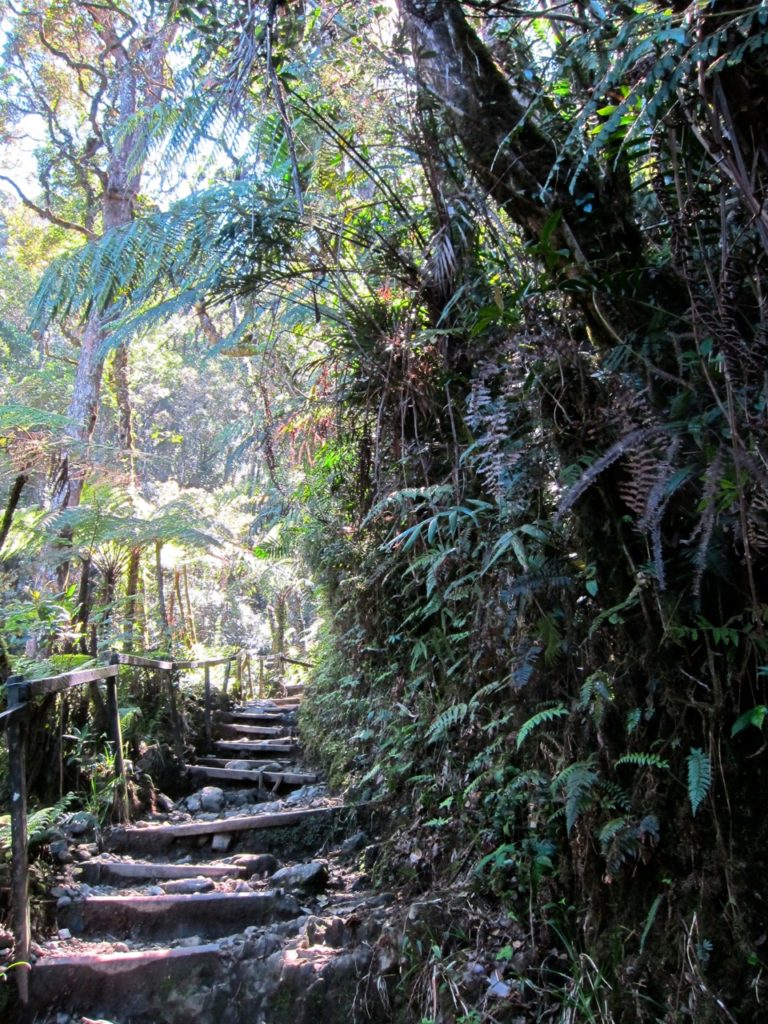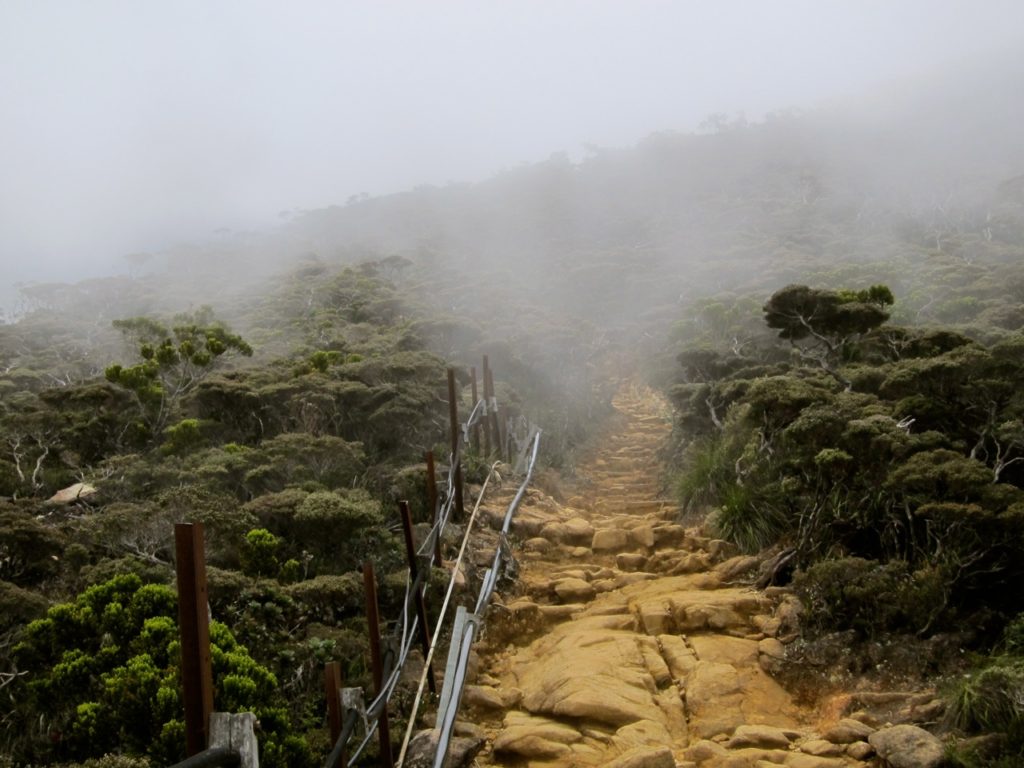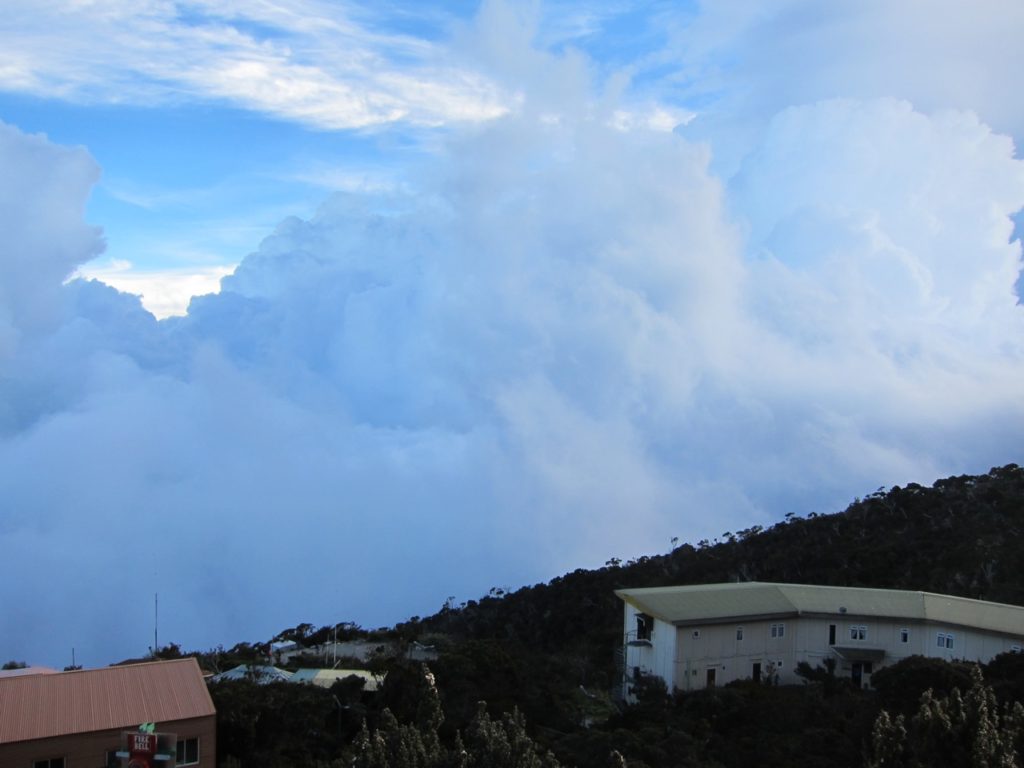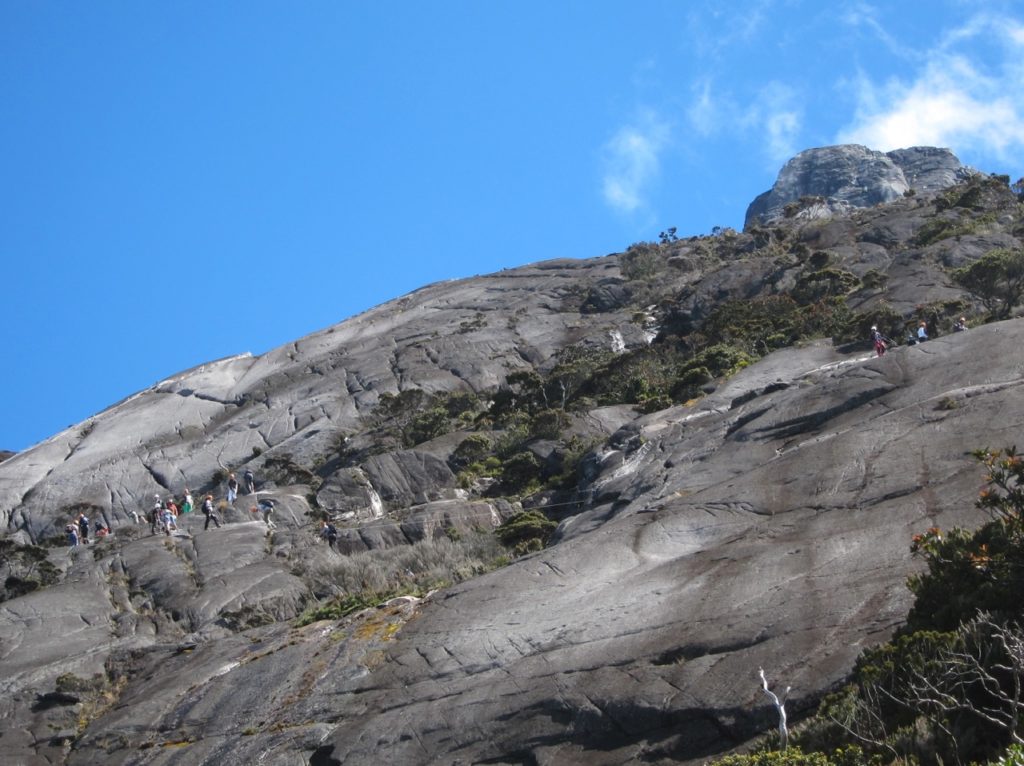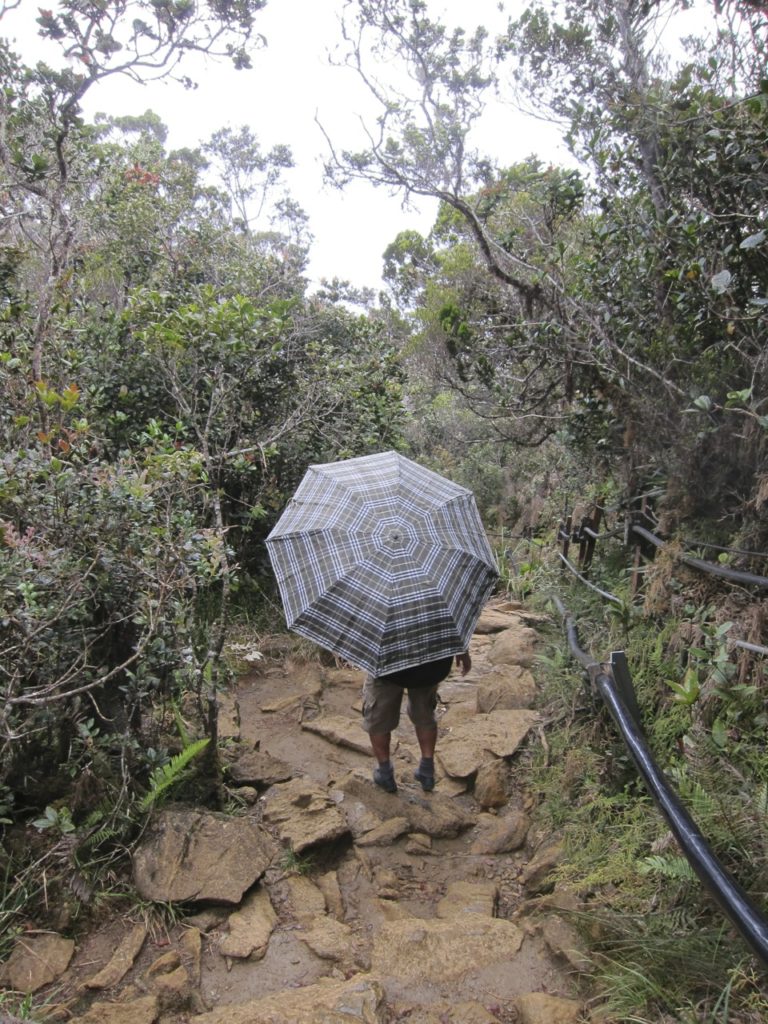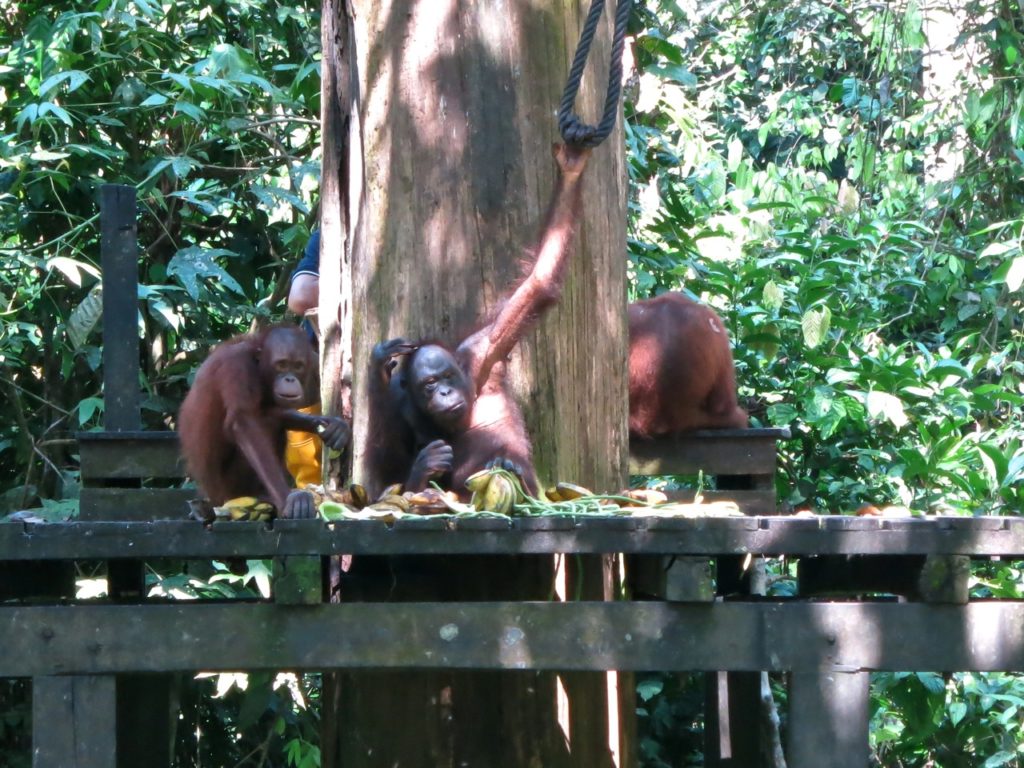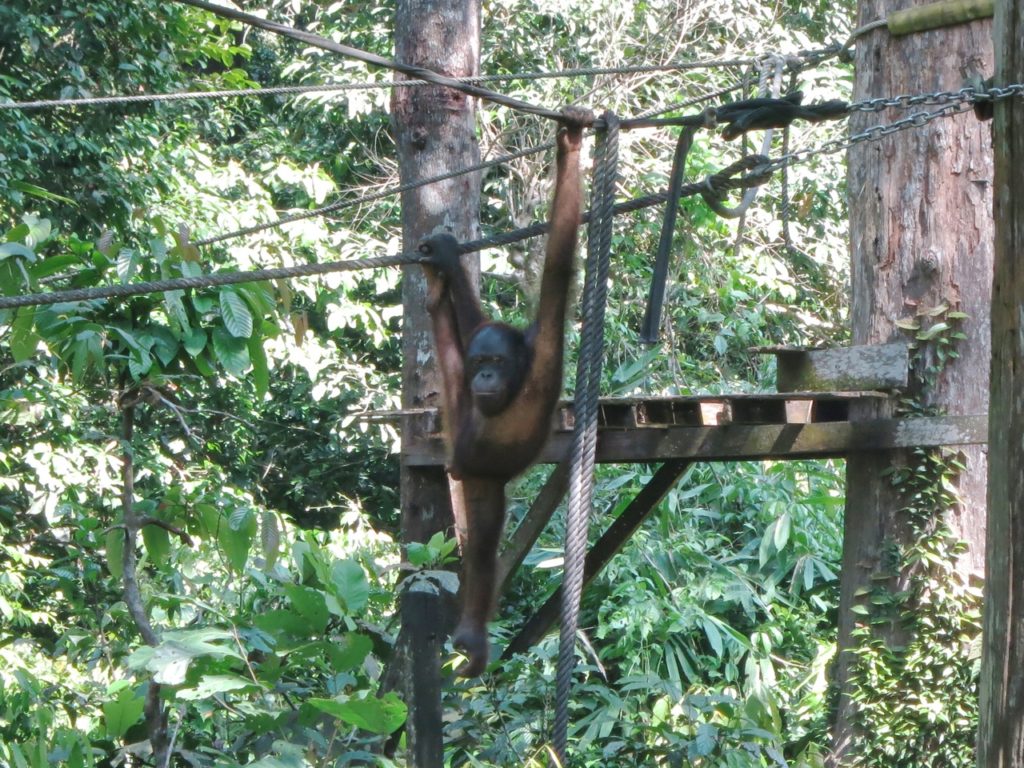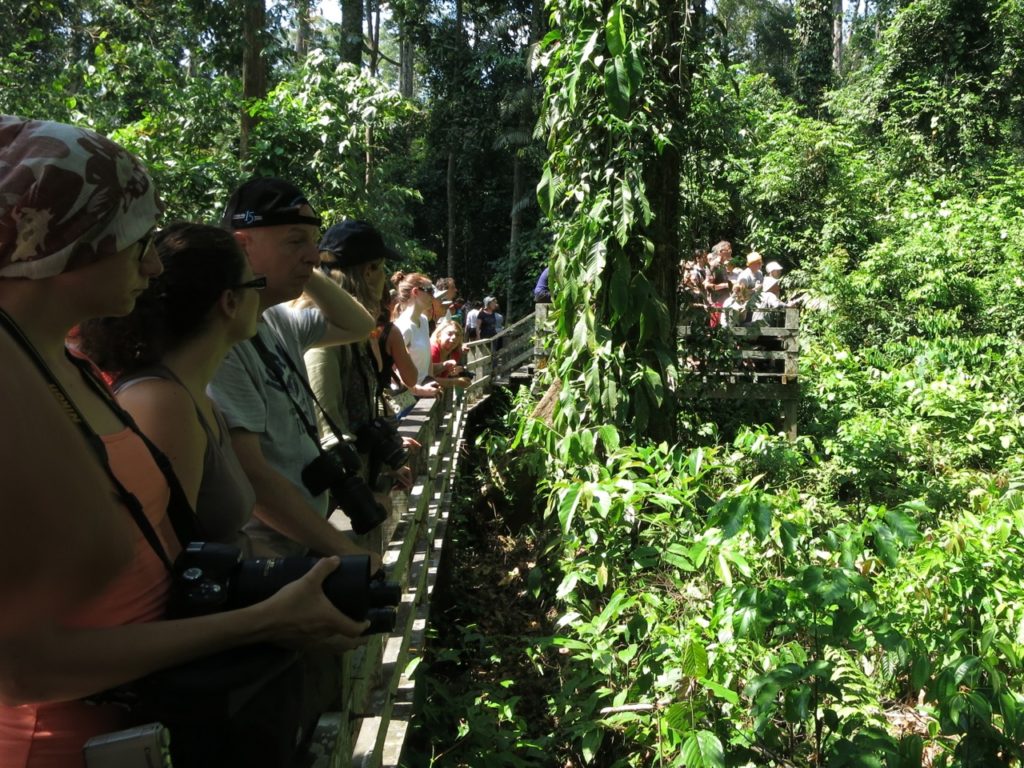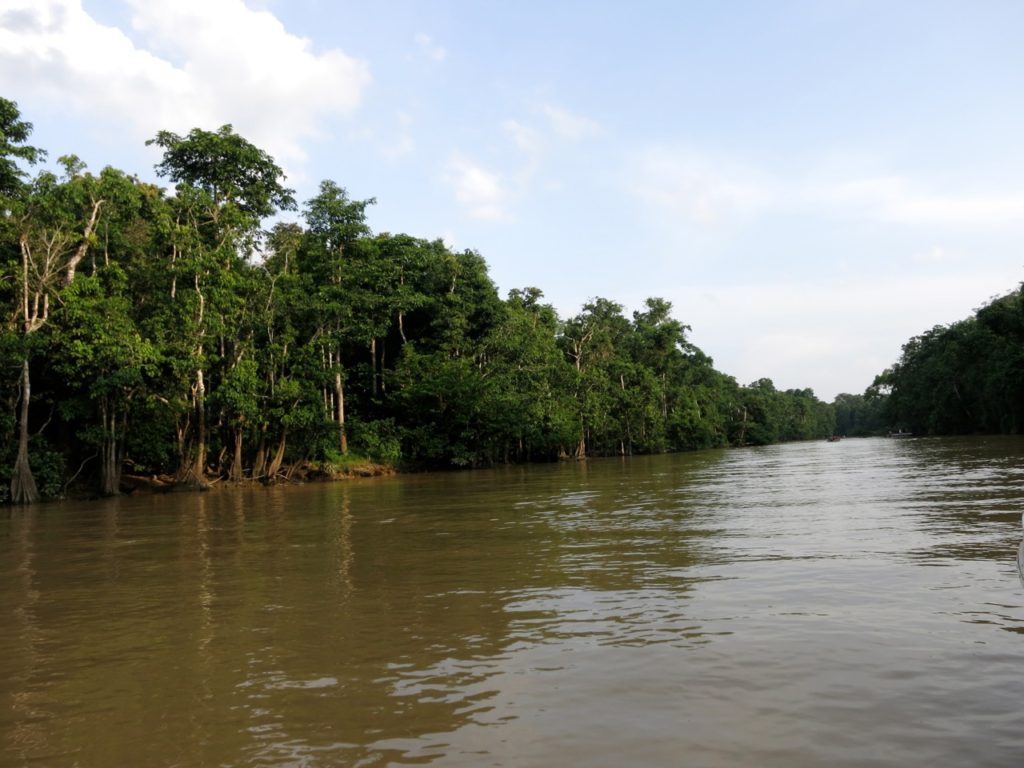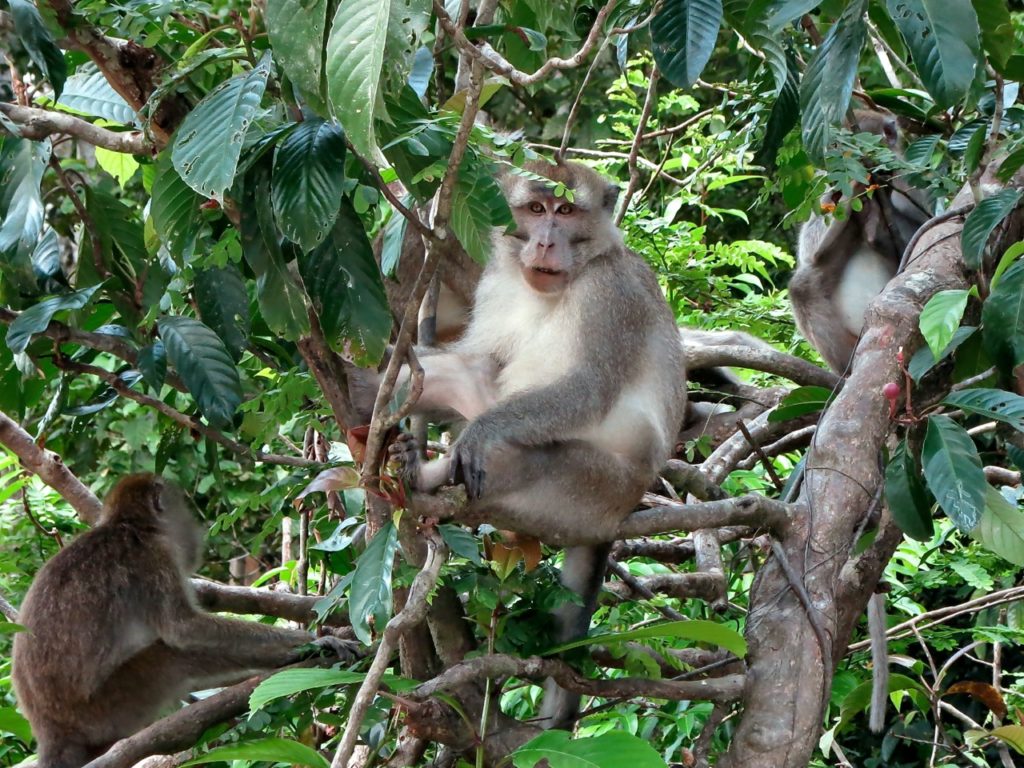Mount Kinabalu summit is the highest mountain between Himalayas and New Guinea. Low’s peak is 4,096 meters (13,438 ft) above sea level. It is a strenuous hike but not too difficult and a person of average fitness can easily do it. Views from the top are stunning and the terrain at the summit area is fascinating. I am not much of a mountaineer and this is so far the highest mountain I came up to. My legs hurt for a week after, but it was definitely worth it.
What to see
A permit is required to climb the Mount Kinabalu and currently only 2 day/1 night option is available (it was possible to climb the mountain within a day before). The official info is here. Currently only 135 permits are issued per day. I hiked in August of 2013 using Ranau trail from Timpahon gate – which it seems is the only available option now after the earthquake in 2015. The trail is well maintained and first 4km or so is along the laid out “steps” through the jungle.
As you climb higher the trees get shorter and path less of a “staircase”. Most of the first day hike is through hot steaming jungle. T-shirt and long light pants worked fine for me. Definitely bring plenty of water. Mandatory guide – paid as part of the permit package – can also help carry your bag if you wish.
At the end of the first day hike is Panalaban where there is a restaurant and several huts to eat and have a nap before waking up for the summit portion of the hike at about 2am. The views keep getting better as you go up. On the day I was there the hut and restaurant were above the clouds and sunset views were majestic.
The huts have bunk beds with sleeping bags on them so you do not need to bring your own sleeping bag. We were awaken at 2am, had some coffee and cookies and headed for the summit. It took me less than 3 hours to hike up to the summit and as a result I had to wait for almost an hour for the sunrise.
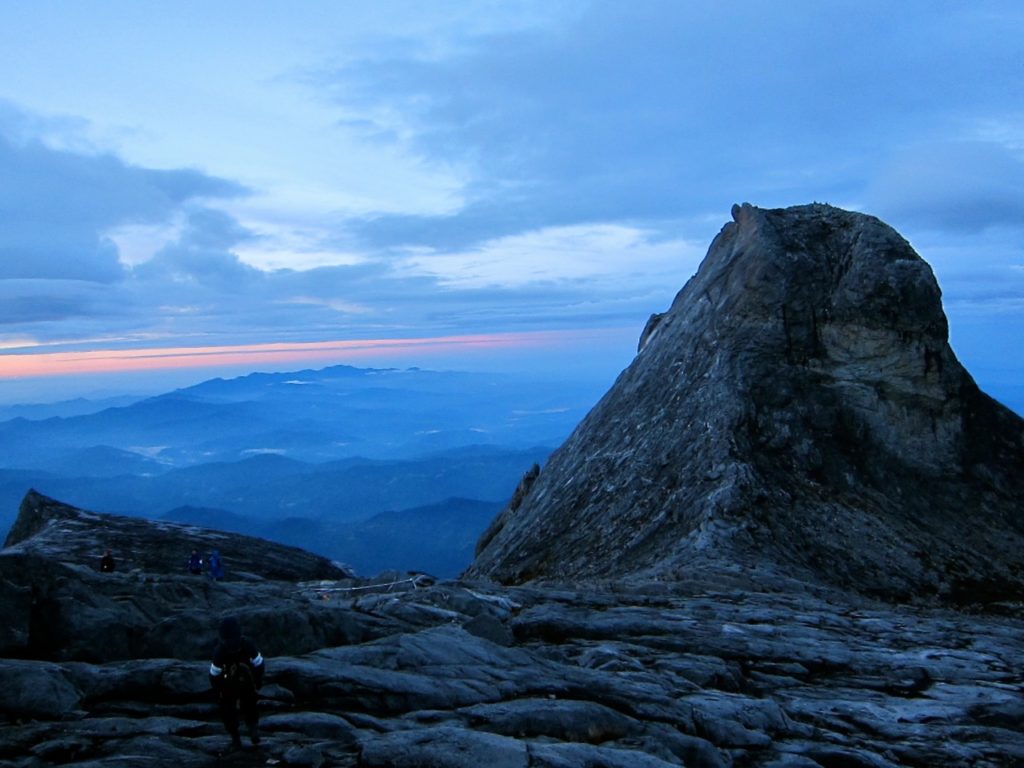
The air gets really cold – even in August – I had a sweater on, windbreaker and even bought a hat at the base camp. I was fine while hiking but got really cold waiting for the sunrise. On the upside though for some time I had the summit almost to myself. By the time of sunrise the remaining 100 plus climbers with their guides came up and it was quite busy at the top – good thing there is a permit system.
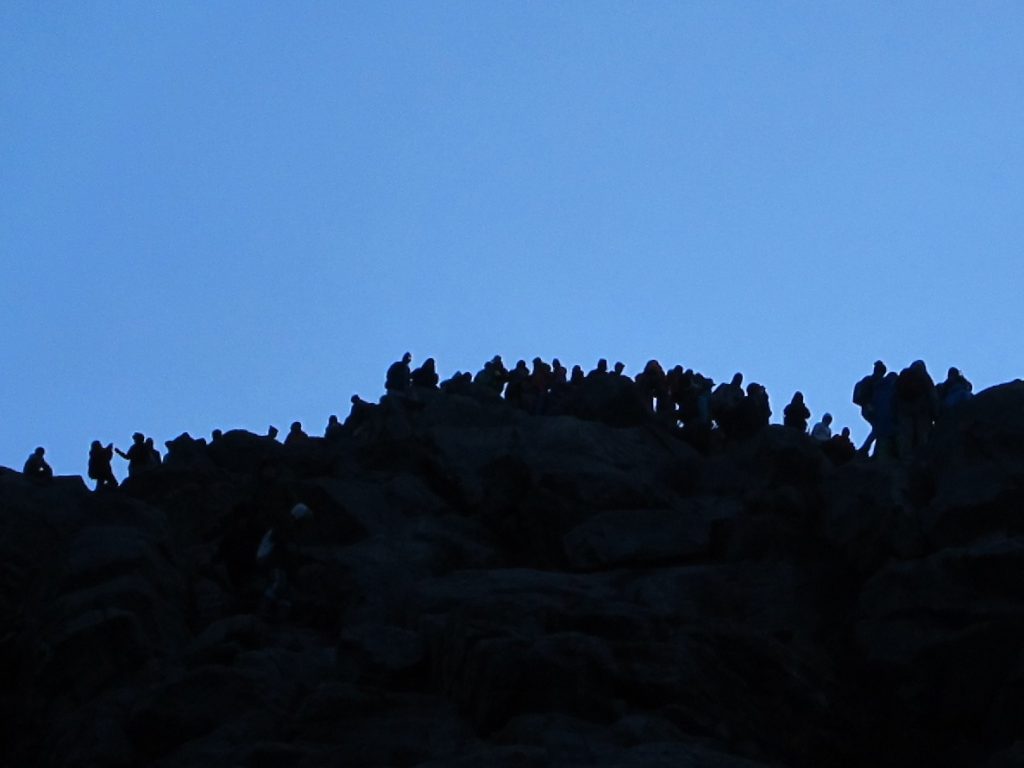
The hike to the summit feels like being on another planet. The surface of the top of the mountain has been chiseled by sliding glaciers, wind and rain over millions of years into striking structures. The walk down after the sunrise is spectacular as you look past the mountain down to the lands below shrouded in fog and passing clouds.
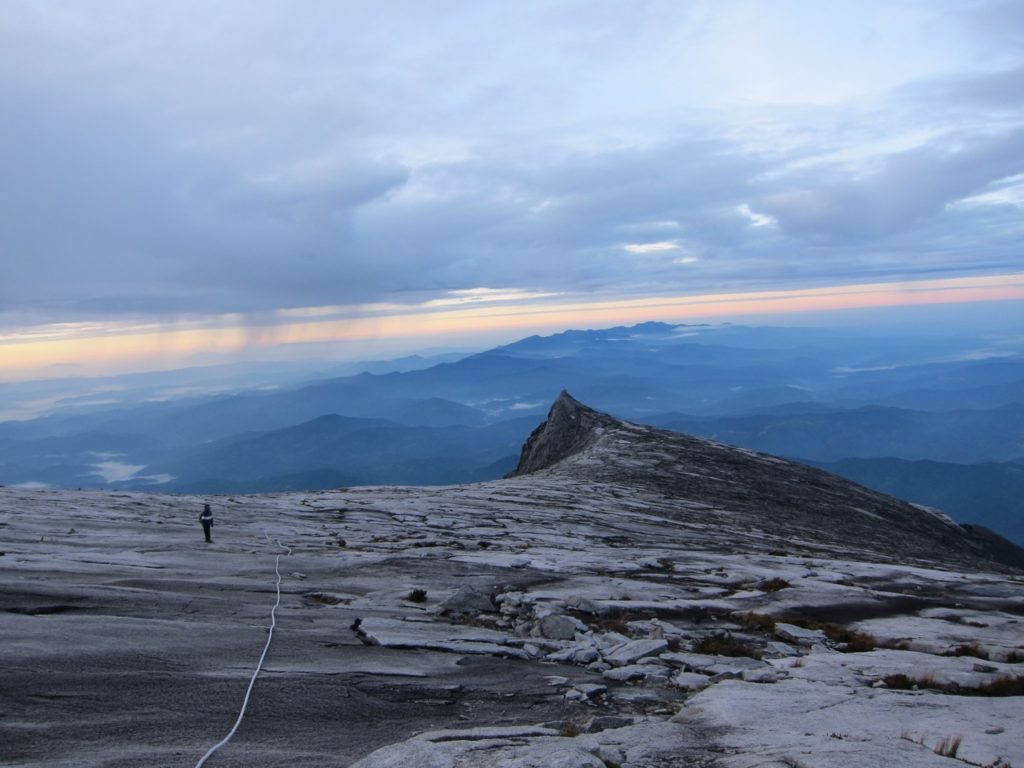
I did Walk the Torq on via ferrata down the steep part of the descent (this is the highest via ferrata in the world apparently). Never having climbed steep mountains, first I was not sure about getting hooked to the cables and having a helmet on, but the climb down was great fun and actually I thought that if I could I would descend like this all the way to the bottom rather than hitting the “steps”.
After reaching the base camp and enjoying nice hot breakfast it was back to the trail and rock “steps”. At some point light rain started and my guide pulled out an umbrella and continued to stroll down the trail. Seeing that umbrella was sobering as in my mind I was a tough mountaineer scaling the mighty Mt. Kinabalu not a casual walker. We then came across quite a number of asian hikers that appeared to be Korean and Chinese retirees cheerfully walking up the trail with umbrella in one hand and walking stick in another. Further humbled by encounter I tried my best to finish the hike without dragging my tired feet too much. I was down and back to the gate by about 1pm.
Logistics
You must book through one of the agencies to secure the permit and guide. I booked my trip through ABC tours. It seems a number of operators offer the same package including pick up and drop-off to a hotel in Kota Kinabalu, climb, guide, food, overnight at one of Panalaban huts, and via ferrata as an optional add-on.


